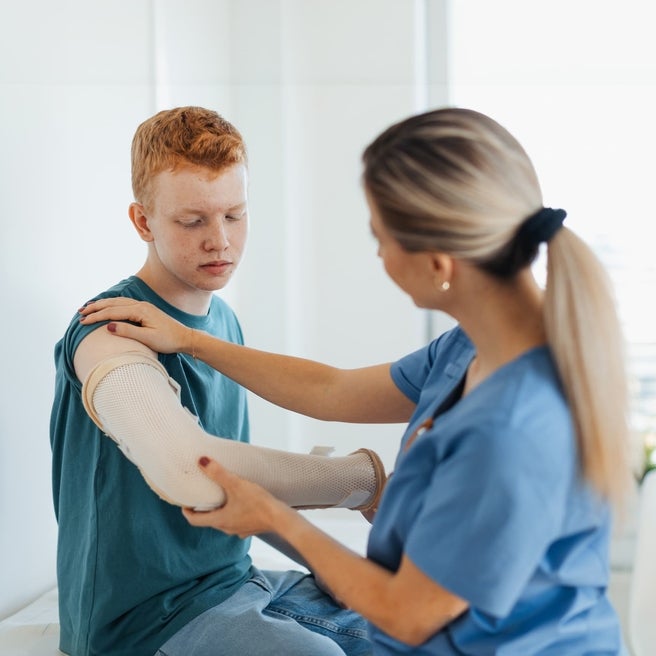What is Sever's disease?
Sever's disease (calcaneal apophysitis) is an inflammatory condition that affects the heel bone (calcaneus) causing heel pain. It happens frequently in young athletes between the ages of 10 and 13, causing pain in one or both heels when walking. Tenderness and swelling may also be present.
Similar to another overuse condition, Osgood-Schlatter disease, Sever's disease has occasionally been termed Osgood-Schlatter of the heel.
What causes Sever's disease?
In young people, the heel bones are still divided by a layer of cartilage. During the growth years, the bone is growing faster than tendons. This makes it likely that the heel cord will be applying great tension where it inserts into the heel bone. In addition, the heel cord is attached to an immature portion of the heel bone — the calcaneal apophysis. In young athletes, the repetitive stress of running and jumping while playing soccer and basketball may cause an inflammation of the growth center of the heel.
Treatments for Sever's disease
At Children's Hospital of Philadelphia (CHOP), children and teens with Sever's disease are treated by orthopedic physicians in the Orthopedic Center and the Sports Medicine and Performance Center.
Our team will design a customized treatment program for your child that may include:
- Activity modification
- Stretching exercises
- Use of shoes that have appropriate hindfoot support
Additionally, we may also suggest the use of nonsteroidal anti-inflammatory medications for a brief period of time to help with heel pain. In general, the use of continuous medication during symptoms is not desirable.
Resources to help
Sports Medicine and Performance Center Resources
We have created resources—including patient and family educational materials, videos, and more—to help you find answers to your questions and feel confident about the care you are providing your child.
